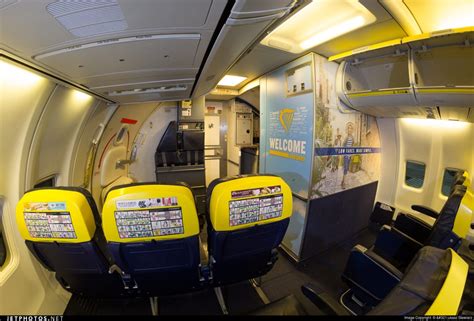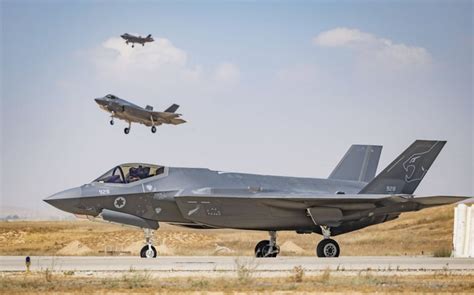
A recent Air India Express flight experienced a harrowing aborted takeoff in Vijayawada, India, after one of its engines caught fire, prompting a swift evacuation of all passengers. Video footage has emerged showing flames and smoke billowing from the aircraft as it sped down the runway, sparking serious safety concerns and an investigation into the incident.
Dramatic video footage captured the near-disaster involving Air India Express flight IX 1659 on Saturday, showing flames erupting from the right engine as the Boeing 737 hurtled along the runway at Vijayawada International Airport. All 64 passengers and crew members were safely evacuated after the pilots aborted the takeoff at high speed. According to Air India Express, “All passengers and crew have been safely evacuated, and no injuries have been reported.”
The incident occurred at approximately 5:20 PM local time. The flight was en route to Doha, Qatar, when the engine malfunctioned during takeoff. Passengers described a scene of panic as smoke filled the cabin and flames became visible outside the windows. “As soon as the flight was about to take off, we heard a loud noise and saw sparks coming from the engine,” recounted one passenger, speaking on condition of anonymity.
Initial reports suggest a possible engine failure as the cause of the fire. Air India Express has initiated an investigation in coordination with relevant regulatory authorities, including the Directorate General of Civil Aviation (DGCA), to determine the precise cause of the engine malfunction. The airline stated, “We are working with the authorities to conduct a thorough investigation and will take all necessary measures to prevent such incidents from happening again.”
The aircraft involved in the incident, a Boeing 737-800, has been grounded pending a comprehensive safety inspection and repairs. The DGCA is expected to release a preliminary report within the next few weeks, outlining the initial findings of the investigation. This incident has raised concerns about the maintenance standards and safety protocols of Air India Express, prompting calls for a more rigorous oversight of the airline’s operations.
This event is not isolated. Aviation experts highlight a series of recent incidents involving Air India Express, raising questions about safety management. A similar event occurred in 2023 when another Air India Express flight experienced an engine fire shortly after takeoff. These recurring incidents underline the need for a comprehensive review of the airline’s maintenance procedures and emergency response protocols.
The Air India Express incident also casts a spotlight on the broader challenges facing the Indian aviation industry. Rapid growth in passenger traffic has strained infrastructure and resources, leading to increased pressure on airlines to maintain safety standards while operating at peak capacity. The DGCA faces the difficult task of balancing regulatory oversight with the need to support the industry’s expansion.
Passengers affected by the cancelled flight have been offered alternative travel arrangements, according to Air India Express. The airline has also provided accommodation and assistance to those stranded in Vijayawada. “We sincerely apologize to our passengers for the inconvenience caused by this incident,” said a spokesperson for the airline. “We are doing everything we can to ensure their comfort and safety.”
The near-disaster serves as a stark reminder of the potential risks associated with air travel and the importance of adhering to strict safety regulations. As the investigation unfolds, aviation experts and regulators will be closely examining the circumstances surrounding the Air India Express incident to identify any systemic issues that need to be addressed. The outcome of this investigation could have significant implications for the future of air safety in India and beyond.
Expanded Details and Context
The aborted takeoff of Air India Express flight IX 1659 in Vijayawada underscores the critical importance of stringent safety measures and timely emergency response in the aviation industry. The incident not only highlights the potential dangers of engine malfunctions but also raises broader questions about aircraft maintenance, regulatory oversight, and the preparedness of airlines to handle emergency situations. A deeper examination of these aspects provides a more comprehensive understanding of the event and its potential implications.
Aircraft Maintenance and Safety Protocols
One of the key areas of focus in the investigation will be the maintenance history of the Boeing 737-800 involved in the incident. Aircraft maintenance is a continuous and meticulous process that involves regular inspections, repairs, and replacements of components to ensure the aircraft’s airworthiness. Airlines are required to adhere to strict maintenance schedules and procedures outlined by the aircraft manufacturer and regulatory authorities.
The investigation will likely scrutinize the aircraft’s maintenance records to determine whether any maintenance tasks were overdue or improperly performed. It will also examine the quality of the replacement parts used in the aircraft’s engine and whether they met the required specifications. Furthermore, the investigation will assess the airline’s adherence to safety protocols and procedures during maintenance operations.
In addition to routine maintenance, airlines are also required to conduct pre-flight inspections before each flight to identify any potential problems. These inspections involve checking the aircraft’s engines, systems, and components for any signs of damage or malfunction. The investigation will examine whether the pre-flight inspection of flight IX 1659 was conducted properly and whether any anomalies were detected.
Aviation experts emphasize the importance of proactive maintenance in preventing engine failures and other mechanical problems. Proactive maintenance involves identifying potential problems before they occur and taking corrective action to prevent them from escalating. This approach requires a robust maintenance management system, skilled technicians, and a commitment to safety at all levels of the organization.
Regulatory Oversight and Compliance
The Directorate General of Civil Aviation (DGCA) is the primary regulatory authority responsible for overseeing the safety and security of air operations in India. The DGCA is responsible for setting safety standards, conducting inspections, and enforcing regulations to ensure that airlines comply with these standards.
The investigation into the Air India Express incident will likely assess the DGCA’s oversight of the airline’s operations. This includes examining the frequency and scope of DGCA inspections, the findings of previous inspections, and the corrective actions taken by the airline to address any deficiencies identified.
The DGCA also plays a crucial role in investigating aviation accidents and incidents to determine their causes and prevent similar occurrences in the future. The investigation will involve gathering evidence, interviewing witnesses, and analyzing data to reconstruct the events leading up to the incident. The DGCA will then issue a report outlining its findings and recommendations for improving safety.
Aviation experts note that effective regulatory oversight requires adequate resources, skilled inspectors, and a commitment to independence. The DGCA must have the authority and resources to conduct thorough inspections and enforce regulations without fear of political or economic pressure.
Emergency Response and Preparedness
The swift evacuation of all passengers and crew members from Air India Express flight IX 1659 is a testament to the importance of emergency response and preparedness. Airlines are required to have detailed emergency response plans in place to handle various scenarios, including engine fires, medical emergencies, and security threats.
The investigation will examine the airline’s emergency response plan and the effectiveness of its implementation. This includes assessing the training of crew members in emergency procedures, the availability of emergency equipment, and the coordination between the airline and emergency services.
The evacuation of passengers from an aircraft during an emergency can be a chaotic and dangerous process. Crew members must be trained to remain calm and provide clear instructions to passengers, while also ensuring that the evacuation is conducted in an orderly and efficient manner.
Aviation experts emphasize the importance of regular emergency drills to prepare crew members and passengers for potential emergencies. These drills should simulate various scenarios and provide opportunities for crew members to practice their skills and identify any weaknesses in the emergency response plan.
Boeing 737 Safety Record and Concerns
The Boeing 737 is one of the most widely used aircraft in the world, with thousands of planes in operation by airlines around the globe. While the 737 has a generally good safety record, there have been instances of accidents and incidents involving the aircraft, particularly the 737-800 and the newer 737 MAX models.
The 737 MAX was grounded worldwide in 2019 after two fatal crashes that killed 346 people. The crashes were linked to a faulty software system called the Maneuvering Characteristics Augmentation System (MCAS), which was designed to prevent the aircraft from stalling.
The grounding of the 737 MAX raised concerns about the safety certification process and the oversight of aircraft manufacturers by regulatory authorities. The investigation into the crashes revealed that Boeing had not adequately tested the MCAS system and that the FAA had not properly scrutinized the system during the certification process.
While the 737-800 is a different model than the 737 MAX, the incident involving Air India Express flight IX 1659 raises questions about the overall safety of the 737 fleet. The investigation will likely examine whether there are any common factors that could contribute to engine fires or other mechanical problems in the 737-800.
Impact on Air India Express and the Indian Aviation Industry
The Air India Express incident has the potential to have a significant impact on the airline’s reputation and financial performance. The airline may face increased scrutiny from regulators and passengers, and it could experience a decline in bookings.
The incident also highlights the challenges facing the Indian aviation industry, which has been growing rapidly in recent years. The rapid growth has put pressure on infrastructure, resources, and safety standards. The DGCA faces the difficult task of balancing regulatory oversight with the need to support the industry’s expansion.
The Indian government has been investing in airport infrastructure and air traffic control systems to improve safety and efficiency. However, more needs to be done to address the challenges facing the industry. This includes strengthening regulatory oversight, improving training for pilots and maintenance technicians, and promoting a culture of safety throughout the aviation sector.
Future Implications and Recommendations
The investigation into the Air India Express incident will provide valuable insights into the causes of the engine fire and the factors that contributed to the near-disaster. The findings of the investigation will be used to develop recommendations for improving safety and preventing similar incidents in the future.
Some potential recommendations could include:
- Strengthening maintenance standards and procedures for airlines.
- Enhancing regulatory oversight of airlines by the DGCA.
- Improving training for pilots and maintenance technicians.
- Promoting a culture of safety throughout the aviation sector.
- Investing in airport infrastructure and air traffic control systems.
- Enhancing emergency response and preparedness.
The Air India Express incident serves as a reminder of the importance of vigilance and continuous improvement in the aviation industry. By learning from this incident and implementing the necessary changes, the industry can work to ensure the safety of passengers and crew members and prevent future tragedies.
Passenger Experiences and Aftermath
The passengers on board Air India Express flight IX 1659 experienced a terrifying ordeal. The sudden eruption of flames and smoke from the engine caused panic and fear among those on board. Many passengers described the experience as traumatic and said they were grateful to have escaped unharmed.
The airline provided accommodation and assistance to passengers stranded in Vijayawada, and offered alternative travel arrangements to Doha. However, some passengers expressed dissatisfaction with the airline’s handling of the situation, citing delays in communication and a lack of information.
The incident highlights the importance of providing support and counseling to passengers who have experienced traumatic events. Airlines should have procedures in place to assist passengers in coping with the emotional and psychological effects of such incidents.
Frequently Asked Questions (FAQ)
Q1: What caused the engine fire on the Air India Express flight?
A1: The exact cause of the engine fire is currently under investigation. Initial reports suggest a possible engine failure during takeoff. Air India Express, in coordination with the Directorate General of Civil Aviation (DGCA), is conducting a thorough investigation to determine the precise cause of the engine malfunction.
Q2: Were there any injuries reported among the passengers and crew?
A2: No injuries were reported. According to Air India Express, “All passengers and crew have been safely evacuated, and no injuries have been reported.”
Q3: What type of aircraft was involved in the incident?
A3: The aircraft involved in the incident was a Boeing 737-800.
Q4: What is Air India Express doing to prevent similar incidents in the future?
A4: Air India Express has initiated an investigation in coordination with the DGCA to determine the precise cause of the engine malfunction. The airline stated, “We are working with the authorities to conduct a thorough investigation and will take all necessary measures to prevent such incidents from happening again.” This includes reviewing maintenance procedures and safety protocols.
Q5: What happened to the passengers who were scheduled to fly to Doha?
A5: Passengers affected by the cancelled flight have been offered alternative travel arrangements. Air India Express has also provided accommodation and assistance to those stranded in Vijayawada.
The Human Factor in Aviation Safety
Beyond technical malfunctions and regulatory oversights, the human factor plays a crucial role in aviation safety. This includes the training, experience, and decision-making abilities of pilots, maintenance personnel, and air traffic controllers. The Air India Express incident underscores the importance of these human elements.
Pilot Training and Decision-Making:
The pilots of flight IX 1659 are credited with swiftly aborting the takeoff and initiating the emergency evacuation. Their actions demonstrate the importance of rigorous pilot training and the ability to make quick, informed decisions under pressure. The investigation will likely examine the pilots’ training records and their adherence to standard operating procedures during the aborted takeoff.
Pilots undergo extensive training to handle a wide range of emergency situations, including engine failures, fires, and other mechanical malfunctions. This training includes simulator exercises that allow pilots to practice their skills in a safe and controlled environment. The effectiveness of this training is often put to the test during real-world emergencies, as demonstrated by the actions of the pilots on flight IX 1659.
Maintenance Personnel and Quality Control:
The quality of aircraft maintenance is directly dependent on the skills and diligence of maintenance personnel. Maintenance technicians are responsible for inspecting, repairing, and replacing aircraft components to ensure their airworthiness. The investigation into the Air India Express incident will likely examine the qualifications and experience of the maintenance technicians who worked on the aircraft’s engine.
Quality control procedures are also essential to ensure that maintenance tasks are performed correctly and that all safety standards are met. Airlines must have robust quality control systems in place to monitor the work of maintenance personnel and identify any potential problems.
Air Traffic Controllers and Communication:
Air traffic controllers play a critical role in ensuring the safe and efficient flow of air traffic. They are responsible for monitoring the position of aircraft, providing instructions to pilots, and coordinating with other air traffic control facilities. Effective communication between air traffic controllers and pilots is essential to prevent accidents and incidents.
While the Air India Express incident did not involve air traffic control directly, the investigation may examine the communication between the pilots and air traffic control during the aborted takeoff. This could help to identify any areas where communication could be improved.
Crew Resource Management (CRM):
Crew Resource Management (CRM) is a training program designed to improve communication and teamwork among flight crews. CRM training emphasizes the importance of open communication, shared decision-making, and mutual respect among crew members. The investigation into the Air India Express incident may examine the extent to which CRM principles were applied during the aborted takeoff and emergency evacuation.
The Role of Technology in Aviation Safety
While human factors are critical, technology also plays an increasingly important role in aviation safety. Advanced technologies such as automated flight control systems, enhanced weather radar, and improved communication systems have significantly reduced the risk of accidents and incidents.
Engine Monitoring Systems:
Modern aircraft engines are equipped with sophisticated monitoring systems that provide real-time data on engine performance. These systems can detect potential problems early on, allowing pilots and maintenance personnel to take corrective action before a serious malfunction occurs. The investigation into the Air India Express incident will likely examine the data from the engine monitoring system to determine if any warning signs were present before the fire.
Enhanced Weather Radar:
Enhanced weather radar systems provide pilots with detailed information about weather conditions along their flight path. This allows pilots to avoid severe weather, which can cause turbulence, icing, and other hazards.
Improved Communication Systems:
Improved communication systems allow pilots to communicate more effectively with air traffic control and other aircraft. This can help to prevent collisions and other incidents.
The Importance of Continuous Improvement
Aviation safety is a constantly evolving field. New technologies, procedures, and regulations are continuously being developed to improve safety and reduce the risk of accidents and incidents. The Air India Express incident serves as a reminder of the importance of continuous improvement in the aviation industry.
Learning from Accidents and Incidents:
Every aviation accident and incident provides valuable lessons that can be used to improve safety. Investigations into accidents and incidents identify the causes and contributing factors, and make recommendations for preventing similar occurrences in the future. The Air India Express incident will undoubtedly provide valuable lessons that will be used to improve safety in the Indian aviation industry and beyond.
Promoting a Culture of Safety:
A culture of safety is essential to ensure that all aviation personnel are committed to safety and are willing to report potential problems. A strong safety culture encourages open communication, shared decision-making, and a willingness to learn from mistakes. The DGCA and Air India Express must work together to promote a culture of safety throughout the airline and the Indian aviation industry.
International Collaboration:
Aviation safety is a global concern, and international collaboration is essential to ensure that safety standards are consistent around the world. The DGCA and Air India Express should collaborate with international aviation organizations, such as the International Civil Aviation Organization (ICAO), to share best practices and improve safety standards.
The Economic Impact of Aviation Safety
Aviation safety is not only a moral imperative but also an economic one. Accidents and incidents can have significant economic consequences, including loss of life, property damage, and disruption of air travel. Investing in aviation safety can help to prevent these economic losses and ensure the long-term sustainability of the aviation industry.
Increased Insurance Costs:
Airlines with a poor safety record often face higher insurance costs. Accidents and incidents can also lead to increased liability claims and legal expenses.
Loss of Passenger Confidence:
Accidents and incidents can erode passenger confidence in air travel, leading to a decline in bookings. This can have a significant impact on the financial performance of airlines and the broader tourism industry.
Disruption of Air Travel:
Accidents and incidents can disrupt air travel, causing delays, cancellations, and rerouting of flights. This can have a significant impact on businesses and individuals who rely on air travel.
The Future of Aviation Safety
The future of aviation safety will likely be shaped by several key trends, including:
- Increased automation: Advanced automation technologies, such as autonomous aircraft, could potentially reduce the risk of human error.
- Big data analytics: Big data analytics can be used to identify patterns and trends that could lead to accidents and incidents.
- Artificial intelligence: Artificial intelligence (AI) can be used to develop new safety systems and improve existing ones.
- Cybersecurity: As aircraft become more connected, cybersecurity will become an increasingly important issue.
The Air India Express incident serves as a reminder that aviation safety is a continuous process that requires vigilance, innovation, and a commitment to excellence. By learning from this incident and embracing new technologies and procedures, the aviation industry can work to ensure that air travel remains the safest mode of transportation.
The incident also highlights the vital role of passenger awareness and preparedness. While airlines conduct safety briefings before each flight, many passengers often pay little attention to the information provided. Understanding basic safety procedures, such as how to use emergency exits and life vests, can significantly increase a passenger’s chances of survival in the event of an emergency. Airlines should explore innovative ways to engage passengers and ensure they are fully aware of safety procedures. This could include interactive demonstrations, videos, or even gamified learning experiences.
Furthermore, the mental health and well-being of aviation professionals should be a priority. Pilots, air traffic controllers, and maintenance personnel often work under stressful conditions, which can impact their performance and decision-making abilities. Airlines and regulatory agencies should provide access to mental health resources and support programs to ensure that aviation professionals are able to perform their duties effectively.
Finally, transparency and open communication are essential to building trust and confidence in the aviation industry. Airlines and regulatory agencies should be transparent about accidents and incidents, and should communicate openly with the public about the steps they are taking to improve safety. This will help to build trust and ensure that passengers feel safe and secure when flying. The full and transparent investigation of the Air India Express incident is a crucial step in that direction.









